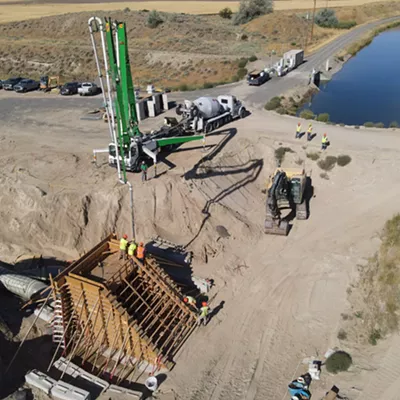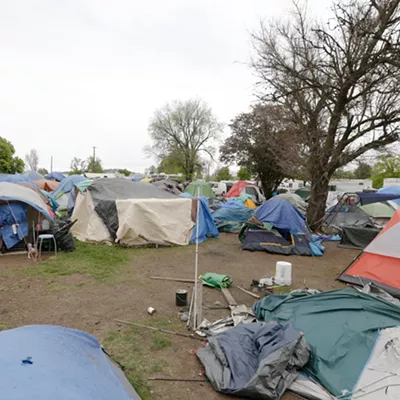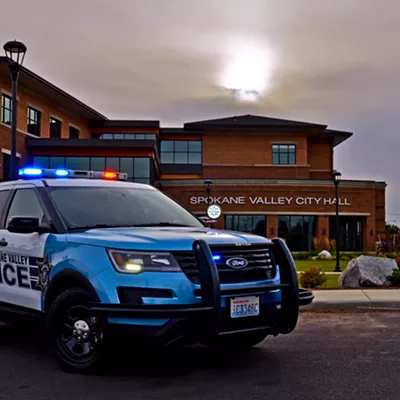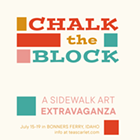A dozen people spread out on floor mats, with New Age-y music wafting over the speakers. My first Pilates class seemed tranquil enough, with the instructor asking us just to concentrate on our breathing. Then she set up our first exercise: Lying our backs, we extended our legs to vertical, with our guide emphasizing the importance of precise posture and perfectly straight legs.
Then she told us to keep them that way for three and a half hours.
Apparently she expected me to have hamstrings like Silly Putty, when in fact my own personal hamstrings have all the flexibility of bone china. Still, Pilates appeared to be different, promising to "sculpt" my muscles while engaging me in "dynamic movement." That much I could relate to: difficult calisthenic-like movements, muscle fatigue, plenty of sweat, manly stuff, arr-arr.
Indeed, local instructor Lorri Albin-Raines reports that the most common misperception about Pilates (puh-LAH-tees) is "that it's just a branch of yoga." So how is it different? "In the lengthening and strengthening of muscles," she says. "And it's true that we hold some positions for awhile, but they aren't static poses in the sense that yoga involves holding poses."
I found some of the exercises a tad difficult. (Ol' Joe Pilates came up with 500 of these things, the sadist.) The "Open V," for example, is a barbaric posture which involves sitting on your butt, spreading your straightened legs and raising them to 45 degrees and then grasping your ankles (yeah, right).
Now, the illustrations in Pilates books always show athletic-looking blonde women performing this bit of barbarous trickery. And they're always smiling. The reality is that, in attempting it, you topple over about six times. Then you rip a muscle called something like the latissimus dorsal fin. And then you curl into a fetal position on the mat, whimpering and hoping that Lorri won't notice.
Then there's the "Teaser" -- so called because when they claim that anyone can actually perform this exercise, they were only teasing. This involves lying on your back, raising your legs to 45 degrees and then, without moving your legs, doing a sit-up and extending both arms so that they're at 45 degrees, too. You're to hold this posture until you leave behind, right there on the mat for all to see, an unsightly puddle of your own personal sweat.
The "swim" exercise involves lying face down on the mat, both arms and legs extended and elevated a few inches off the floor, waggling in a swimming motion. I enjoyed this challenge, although technically speaking, I wasn't entirely successful in actually getting my arms up off the mat. (Or my legs either.)
Something as simple-sounding as the "Single Leg Stretch (knee to chest)" involved many considerations: Put one hand at the base of your knee and the other outside your opposite calf -- no, not that way, the other way -- now keep your lower back on the mat while inhaling and extending your arms at a 45-degree angle. Now exhale and reverse, being sure to force out the unexhaled air -- but you have to inhale while supporting your lower leg with the opposite hand.
Does anyone think Pilates exercises could ever be simple, with names like Swan on the Barrel, Corkscrew Control, the Russian Splits, the Helicopter Hundreds and the Boomerang?
Pilates was becoming anything but simple. What it was becoming was a desperate cry for help, with instructor Lorri repeatedly coming over to assist, adjust, align. At first, she had tactfully asked permission to touch me. But what I wanted her to do was hug me, comfort me and tell me that the searing pain in my hip flexors would someday go away.
His pain, our gain: That's the official line on Joseph H. Pilates, though I think Joe skipped the parts about our muscle strain and mental drain. Because he was a weak and sickly child back in Germany, Pilates had both the motivation to seek better fitness and the passion to develop all those exercises. They were based on his study of yes, yoga, but also of Zen, ancient Greek and Roman exercises, even the movements of animals. He became a skier, gymnast, skin diver, boxer and acrobat. During World War I, he rehabilitated wounded soldiers by rigging their hospital bedsprings in such a way that the patients could work their arms and legs against resistance while still lying in bed.
The rise of the Nazis drove Pilates out of his homeland. He met his wife Clara -- eventually a devotee of his method -- on the boat voyage over to America. Soon after the second World War, he had a studio in New York City that won over as converts the likes of Martha Graham, George Balanchine and their dancers.
Which explains why I've been able to succeed at Pilates by drawing on my inborn balletic grace. (Actually, despite my whining, I really am a convert. I'm going to purchase the five-sessions-for-$35 deal and start sculpting right away.)
But like a typical beginner, I was feeling it in a lot more places than just my abs. Albin-Raines ticked off the usual suspects: "Improper breathing, and being hunched over. People should relax their shoulders -- instead, we tend to overuse those muscles and keep them tight.
"The typical mistake," she continues, "is overuse of the gross musculature. Instead, [in Pilates classes] we're going after using the small muscle groups." Pressed for examples, she lists the psoas ("a loin muscle that runs straight up alongside the pubic bone"), the piriformus ("a gluteal muscle that people sometimes associate with sciatica") and the multifidus ("in the mid-back area, important in posture"), adding that "the muscles we tend most to overuse are the trapezius and the hip flexors" in the upper back and front of the hip bone, respectively.
I was pretty sure I had all these muscles even before my first Pilates session, though I couldn't swear to it.
I was swearing at them now. Still, with all the books and videos available, you really can get results. You can even do Pilates in the comfort of your own torture chamber at home, though naturally Albin-Raines advocates the need for a qualified instructor: "It's fine to use books and videos to exercise at home, but you really need to supplement that with classes and instruction so that you know you're doing the exercises correctly and that your positioning is correct."
One book she recommends in particular is Allan Menezes' the Complete Guide to Joseph H. Pilates' Techniques of Physical Conditioning (Hunter House, 2000).
What, no Mari Winsor? Doesn't the local expert just love those ubiquitous infomercials? "Well, she has a good producer. That's all I'll say," is all Albin-Raines says.
She has some further advice, though. "Make sure that any instructor is board-certified. You know, Pilates lost its trademark two years ago, so that anyone can call themselves Pilates instructors. They should be certified by and affiliated with PMA, the Pilates Method Alliance (www.pilatesmethodalliance.com).
The certified instructors promise to be gentle. You won't feel a thing, except for in your piriformis, multifidus and psoas.
Lorri Albin-Raines, 316 W. Boone Ave., Suite 258 (325-7333)
Publication date: 1/29/04














